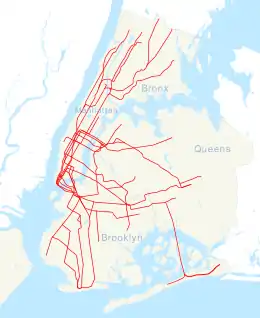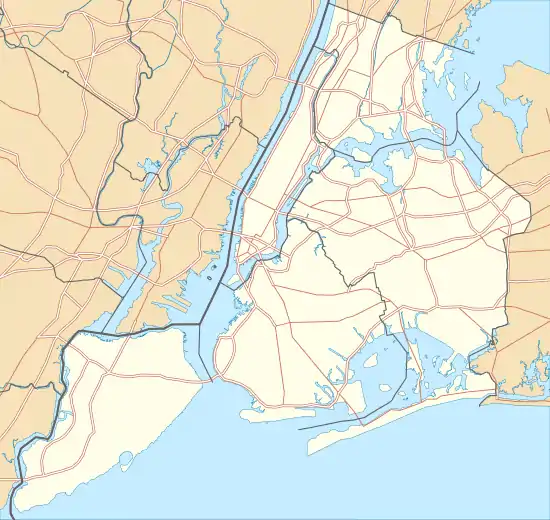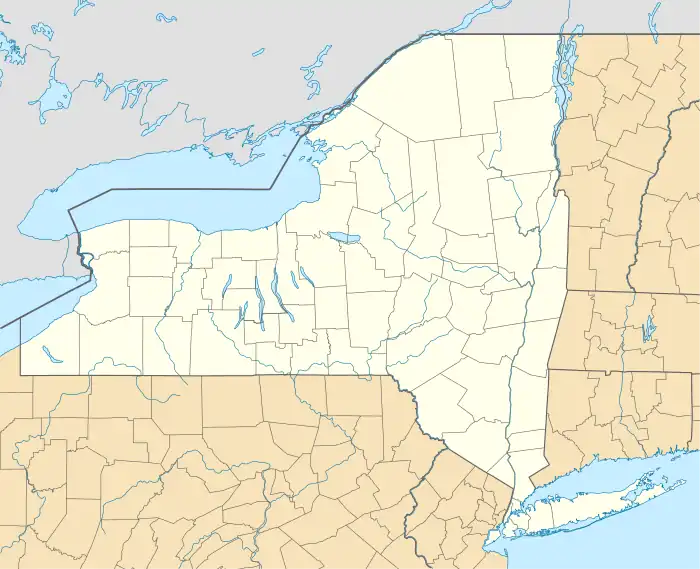215 Street | ||||||||||||||||||||||||||||||||||||||||||||||||||||||||||||||||||||||||||||||||||
|---|---|---|---|---|---|---|---|---|---|---|---|---|---|---|---|---|---|---|---|---|---|---|---|---|---|---|---|---|---|---|---|---|---|---|---|---|---|---|---|---|---|---|---|---|---|---|---|---|---|---|---|---|---|---|---|---|---|---|---|---|---|---|---|---|---|---|---|---|---|---|---|---|---|---|---|---|---|---|---|---|---|---|
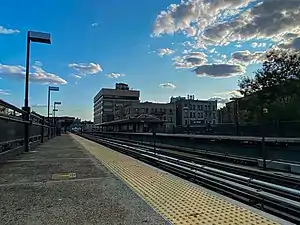 Facing southbound viewing the station. | ||||||||||||||||||||||||||||||||||||||||||||||||||||||||||||||||||||||||||||||||||
| Station statistics | ||||||||||||||||||||||||||||||||||||||||||||||||||||||||||||||||||||||||||||||||||
| Address | West 215th Street & 10th Avenue New York, NY 10034 | |||||||||||||||||||||||||||||||||||||||||||||||||||||||||||||||||||||||||||||||||
| Borough | Manhattan | |||||||||||||||||||||||||||||||||||||||||||||||||||||||||||||||||||||||||||||||||
| Locale | Inwood | |||||||||||||||||||||||||||||||||||||||||||||||||||||||||||||||||||||||||||||||||
| Coordinates | 40°52′10″N 73°54′54″W / 40.869473°N 73.915074°W | |||||||||||||||||||||||||||||||||||||||||||||||||||||||||||||||||||||||||||||||||
| Division | A (IRT)[1] | |||||||||||||||||||||||||||||||||||||||||||||||||||||||||||||||||||||||||||||||||
| Line | IRT Broadway–Seventh Avenue Line | |||||||||||||||||||||||||||||||||||||||||||||||||||||||||||||||||||||||||||||||||
| Services | 1 | |||||||||||||||||||||||||||||||||||||||||||||||||||||||||||||||||||||||||||||||||
| Transit | ||||||||||||||||||||||||||||||||||||||||||||||||||||||||||||||||||||||||||||||||||
| Structure | Elevated | |||||||||||||||||||||||||||||||||||||||||||||||||||||||||||||||||||||||||||||||||
| Platforms | 2 side platforms | |||||||||||||||||||||||||||||||||||||||||||||||||||||||||||||||||||||||||||||||||
| Tracks | 3 (2 in regular service) | |||||||||||||||||||||||||||||||||||||||||||||||||||||||||||||||||||||||||||||||||
| Other information | ||||||||||||||||||||||||||||||||||||||||||||||||||||||||||||||||||||||||||||||||||
| Opened | March 12, 1906 | |||||||||||||||||||||||||||||||||||||||||||||||||||||||||||||||||||||||||||||||||
| Opposite- direction transfer | No | |||||||||||||||||||||||||||||||||||||||||||||||||||||||||||||||||||||||||||||||||
| Traffic | ||||||||||||||||||||||||||||||||||||||||||||||||||||||||||||||||||||||||||||||||||
| 2022 | 403,240[2] | |||||||||||||||||||||||||||||||||||||||||||||||||||||||||||||||||||||||||||||||||
| Rank | 399 out of 423[2] | |||||||||||||||||||||||||||||||||||||||||||||||||||||||||||||||||||||||||||||||||
| ||||||||||||||||||||||||||||||||||||||||||||||||||||||||||||||||||||||||||||||||||
| ||||||||||||||||||||||||||||||||||||||||||||||||||||||||||||||||||||||||||||||||||
| ||||||||||||||||||||||||||||||||||||||||||||||||||||||||||||||||||||||||||||||||||
| ||||||||||||||||||||||||||||||||||||||||||||||||||||||||||||||||||||||||||||||||||
| ||||||||||||||||||||||||||||||||||||||||||||||||||||||||||||||||||||||||||||||||||
| ||||||||||||||||||||||||||||||||||||||||||||||||||||||||||||||||||||||||||||||||||
The 215th Street station is a local station on the IRT Broadway–Seventh Avenue Line of the New York City Subway. Located at the intersection of 215th Street and Tenth Avenue in the Manhattan neighborhood of Inwood, it is served by the 1 train at all times. It is the northernmost subway station in the system on Manhattan Island.
History
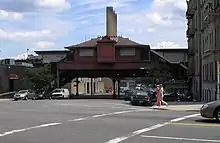
The West Side Branch of the first subway was extended northward to a temporary terminus of 221st Street and Broadway on March 12, 1906 with the first open station at Dyckman Street, as the stations at 168th Street, 181st Street, and 191st Street were not yet completed.[3][4][5] This extension was served by shuttle trains operating between 157th Street and 221st Street until May 30, 1906, when express trains began running through to 221st Street.[6][7]
To address overcrowding, in 1909, the New York Public Service Commission proposed lengthening the platforms at stations along the original IRT subway.[8]: 168 As part of a modification to the IRT's construction contracts made on January 18, 1910, the company was to lengthen station platforms to accommodate ten-car express and six-car local trains. In addition to $1.5 million (equivalent to $47.1 million in 2022) spent on platform lengthening, $500,000 (equivalent to $15.7 million in 2022) was spent on building additional entrances and exits. It was anticipated that these improvements would increase capacity by 25 percent.[9]: 15 The northbound platform at the 215th Street station was extended 50 feet (15 m) at both its north and south ends.[9]: 114 The southbound platform was not lengthened.[9]: 106 Six-car local trains began operating in October 1910,[8]: 168 and ten-car express trains began running on the West Side Line on January 24, 1911.[8]: 168 [10] Subsequently, the station could accommodate six-car local trains, but ten-car trains could not open some of their doors.[11]
The city government took over the IRT's operations on June 12, 1940.[12][13] Platforms at IRT Broadway–Seventh Avenue Line stations between 103rd Street and 238th Street, including those at 215th Street, were lengthened to 514 feet (157 m) between 1946 and 1948, allowing full ten-car express trains to stop at these stations.[11] A contract for the platform extensions at 215th Street and five other stations on the line was awarded to the Rao Electrical Equipment Company and the Kaplan Electric Company in June 1946.[14] The platform extensions at these stations were opened in stages. On July 9, 1948, the platform extensions at stations between 207th Street and 238th Street, including the 215th Street station, were opened for use at the cost of $423,000.[11][15] At the same time, the IRT routes were given numbered designations with the introduction of "R-type" rolling stock, which contained rollsigns with numbered designations for each service. [16] The route to 242nd Street became known as the 1.[17]
In 1969, the station's wooden platforms were replaced with concrete ones.[18]
The station was renovated by an in-house crew of New York City Transit Authority employees in 1990.[19]
From January 5 to December 20, 2019, a free out-of-system transfer was provided from this station to Inwood–207th Street to accommodate the temporary closure of the IRT platforms at 168th Street, where a free transfer was normally provided. A similar transfer was also provided one station south at 207th Street.[20][21]
Station layout
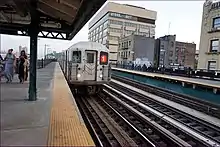
| Platform level | Side platform | |
| Northbound local | ← ← | |
| Peak-direction express | No regular service | |
| Southbound local | | |
| Side platform | ||
| Mezzanine | Fare control, station agent, MetroCard machines | |
| Ground | Street level | Entrances/exits |
This elevated station has two side platforms and three tracks with the center track not used in revenue service.[22] The station is served by the 1 at all times[23] and is between Marble Hill–225th Street to the north and 207th Street to the south.[24] Both platforms have beige windscreens and dark canopies in the center, which were replaced as part of a renovation project in 2012. At either ends of the platforms, black steel waist-high fences are installed. The station name plates are in the standard black with white lettering.
The 1991 artwork here is called Elevated Nature I-IV by Wopo Holup. It consists of two concrete panels with wooden frames on the southbound platform's station house. Each panel consists of eight squares depicting tree limbs. This artwork is also located at four other stations on this line.
The station is near the northern end of the 207th Street Yard, which includes the 215th Street Signal Shop, and the MTA Buses Kingsbridge Depot which is just slightly north of this station. It is also four blocks along 218th Street from Inwood Hill Park and, also on 218th Street, provides access to Columbia University's Baker Field athletic complex, as well as the Allen Hospital, a satellite facility of NewYork–Presbyterian Hospital. North of the station, the line crosses over the Harlem River Ship Canal via the Broadway Bridge into the mainland of New York.
Exits
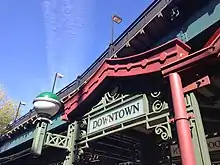
Both platforms have one wooden adjacent station house in the center. However, only the southbound one is used for passenger service. Three doors from the platform lead to a small waiting area, where a turnstile bank provides access to and from the station. Outside fare control, there is a token booth and two staircases going down to either western corners of Tenth Avenue and 215th Street.[25]
The station house on the northbound platform is used for employees only. One exit-only turnstile at platform level leads to a staircase that goes down to the northeast corner of 215th Street and Tenth Avenue while a High Entry/Exit Turnstile, also at platform level, leads to a staircase going down to the southeast corner.[25][26]
Ridership
In 2018, the station had 553,050 boardings, making it the 402nd most used station in the 424-station system. This amounted to an average of 1,787 passengers per weekday. In terms of annual passenger ridership and in terms of weekday daily ridership, this is the least used station in Manhattan.[2]
References
- ↑ "Glossary". Second Avenue Subway Supplemental Draft Environmental Impact Statement (SDEIS) (PDF). Vol. 1. Metropolitan Transportation Authority. March 4, 2003. pp. 1–2. Archived from the original (PDF) on February 26, 2021. Retrieved January 1, 2021.
- 1 2 3 "Annual Subway Ridership (2017–2022)". Metropolitan Transportation Authority. 2022. Retrieved November 8, 2023.
- ↑ "Farthest North in Town by the Interborough" (PDF). The New York Times. January 14, 1907. p. 18.
- ↑ Report of the Public Service Commission for the First District of the State of New York. New York State Public Service Commission. 1913.
- ↑ "Trains To Ship Canal: But They Whiz by Washington Heights Station" (PDF). The New York Times. March 13, 1906. p. 16. Retrieved August 16, 2015.
- ↑ Interborough Rapid Transit Company (1906). Subway Division - New York City (Map).
- ↑ "Express to 221st Street: Will Run In the Subway To-day–New 181st Street Station Ready" (PDF). The New York Times. May 30, 1906. p. 1.
- 1 2 3 Hood, Clifton (1978). "The Impact of the IRT in New York City" (PDF). Historic American Engineering Record. pp. 146–207 (PDF pp. 147–208). Retrieved December 20, 2020.
 This article incorporates text from this source, which is in the public domain.
This article incorporates text from this source, which is in the public domain.{{cite web}}: CS1 maint: postscript (link) - 1 2 3 Report of the Public Service Commission for the First District of the State of New York For The Year Ending December 31, 1910. Public Service Commission. 1911.
- ↑ "Ten-car Trains in Subway to-day; New Service Begins on Lenox Av. Line and Will Be Extended to Broadway To-morrow". The New York Times. January 23, 1911. ISSN 0362-4331. Retrieved April 5, 2018.
- 1 2 3 Report for the three and one-half years ending June 30, 1949. New York City Board of Transportation. 1949. hdl:2027/mdp.39015023094926.
- ↑ "City Transit Unity Is Now a Reality; Title to I.R.T. Lines Passes to Municipality, Ending 19-Year Campaign". The New York Times. June 13, 1940. ISSN 0362-4331. Archived from the original on January 7, 2022. Retrieved May 14, 2022.
- ↑ "Transit Unification Completed As City Takes Over I. R. T. Lines: Systems Come Under Single Control After Efforts Begun in 1921; Mayor Is Jubilant at City Hall Ceremony Recalling 1904 Celebration". New York Herald Tribune. June 13, 1940. p. 25. ProQuest 1248134780.
- ↑ "Platform Awards Made; Two Concerns to Enlarge Six Subway Stations of IRT" (PDF). The New York Times. June 14, 1946. p. 23. ISSN 0362-4331. Retrieved January 27, 2021.
- ↑ "More Long Platforms – Five Subway Stations on IRT to Accommodate 10-Car Trains" (PDF). The New York Times. July 10, 1948. p. 8. ISSN 0362-4331. Retrieved March 27, 2016.
- ↑ Brown, Nicole (May 17, 2019). "How did the MTA subway lines get their letter or number? NYCurious". amNewYork. Retrieved January 27, 2021.
- ↑ Friedlander, Alex; Lonto, Arthur; Raudenbush, Henry (April 1960). "A Summary of Services on the IRT Division, NYCTA" (PDF). New York Division Bulletin. Electric Railroaders' Association. 3 (1): 2. Archived from the original (PDF) on September 14, 2020. Retrieved January 27, 2021.
- ↑ Minutes and Proceedings. New York City Transit Authority. 1969. p. 1217.
- ↑ Cox, Jeremiah (December 31, 2010). "A plaque for the station opened in 1907 and rehabilitated in 1991". subwaynut.com. Archived from the original on January 27, 2020. Retrieved January 26, 2020.
- ↑ "Station Info (168 St)". MTA. Retrieved December 14, 2018.
- ↑ "Washington Heights subway station set to close for elevator repairs". ABC7 New York. January 3, 2019. Retrieved October 24, 2020.
- ↑ Dougherty, Peter (2006) [2002]. Tracks of the New York City Subway 2006 (3rd ed.). Dougherty. OCLC 49777633 – via Google Books.
- ↑ "1 Subway Timetable, Effective August 12, 2023". Metropolitan Transportation Authority. Retrieved August 26, 2023.
- ↑ "Subway Map" (PDF). Metropolitan Transportation Authority. September 2021. Retrieved September 17, 2021.
- 1 2 "MTA Neighborhood Maps: Inwood" (PDF). Metropolitan Transportation Authority. 2015. Retrieved July 29, 2016.
- ↑ "Inwood Rezoning Proposal Chapter 14: Transportation" (PDF). edc.nyc. 2017. p. 14-47, 14-48. Archived from the original (PDF) on January 27, 2020. Retrieved January 26, 2020.
External links
- nycsubway.org – IRT West Side Line: 215th Street
- Station Reporter – 1 Train
- The Subway Nut – 215th Street Pictures Archived July 6, 2020, at the Wayback Machine
- 215th Street entrance from Google Maps Street View
- Platforms from Google Maps Street View
